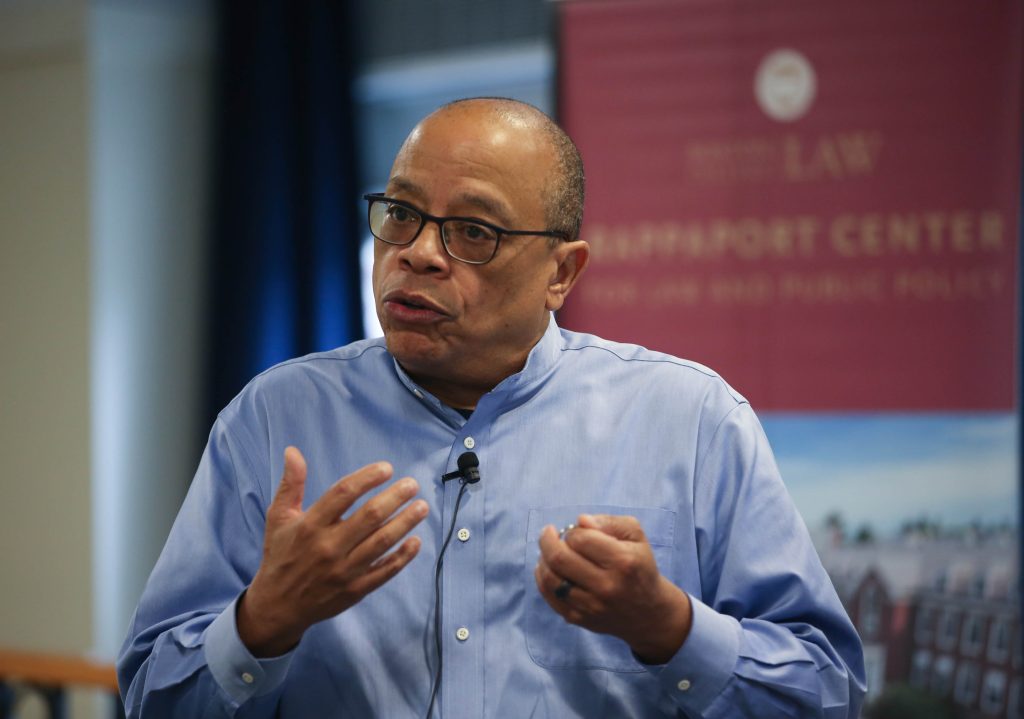The largest Confederate Monument in the world was shown to students during the community address of BC Law Rappaport Distinguished Visiting Professor Jeffery Robinson, who made it clear that the message of sites and symbols like it is firmly rooted in troubled beliefs from the nation’s past.
The question that Robinson, a historian and advocate for criminal justice and racial equality, put to his audience on September 21 was captured in the titling of his speech, “What Heritage Are You Talking About? Confederate Monuments in the United States.” He partially answered it himself when he observed: “We do not honor everyone who went to a war and killed somebody, we honor people who went to war for what they are fighting for. But what were the Confederates fighting for? It’s pretty clear and plain if you listen to what they had to say.”
Robinson provided a slide displaying the so-called “Confederate Mount Rushmore.” The 90-foot-tall memorial sculpture carved into a granite rockface at Stone Mountain Park, 16 miles east of Atlanta, Georgia, depicts three Confederate leaders, Jefferson Davis, Robert E. Lee, and Stonewall Jackson, riding on horseback, their heads held high, their hats held to their breasts. Robinson detailed the background of the monument, its “sacred” nature to the Ku Klux Klan, and noted the financial support it received from the State of Georgia in completing the project.
Strikingly, the monument is only 50 years old; it was finished in 1972. Its age is not an anomaly, Robinson noted, presenting evidence that many such Confederate monuments were built not in the years soon after the Civil War, but throughout the 20th century, including at the height of the civil rights movement—underscoring the entrenchment of America’s dark history.
Robinson—drawing on deep research and his experience as former director of the ACLU’s Trone Center for Justice and Equality, and as founder and CEO of The Who We Are Project, a non-profit organization working to expose the history of racism in the US—made the case that the uniform goal of the Confederacy was preserving slavery in the American South agricultural industry, and that major monuments and depictions of the Confederate era served to promote sympathetic views of the Confederacy.
During a question-and-answer period after his talk, Robinson encouraged the audience to take on the task of educating others about the history of what these monuments and symbols mean, and emphasized that now is the moment for the next generation to take the lead.


